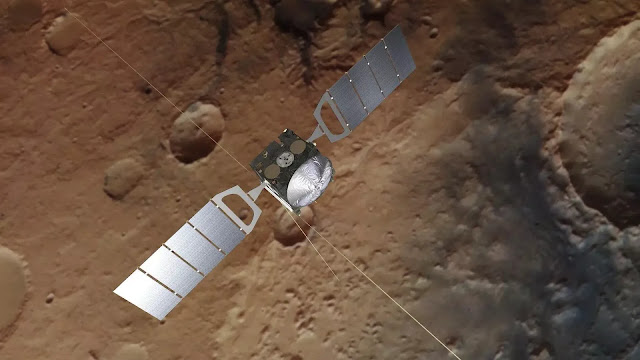Mars orbiter running on Windows 98 gets software upgrade 19 years after launch
The era of dial-up internet, AOL Instant Messenger (AIM), and Myspace may indeed be gone on Earth, but the early days of the internet continue to exist on Mars. A Martian spacecraft has been operating on software developed more than 20 years ago in a proprietary environment largely dependent on Microsoft Windows 98, and is in desperate need of an upgrade.
 |
| Illustration: ESA |
MARSIS (Mars Advanced Radar for Subsurface and Ionospheric Sounding) software is being updated by the European Space Agency (ESA) almost 19 years after the Mars Express orbiter was launched. The first radar sounder to orbit a different planet, the MARSIS instrument, helped scientists find proof of water on Mars in 2018. While the Mars Express spacecraft orbits Mars, MARSIS uses a massive, 131-foot-long (40 meters) antenna to transmit low-frequency radio waves toward the planet.
The software that the MARSIS uses to perform all of these tasks is extremely antiquated and hasn't been updated since the spacecraft was launched in June 2003. The software was created in a Windows 98-based environment, which doesn't integrate properly with the current internet without a lot of workarounds. According to Andrea Cicchetti, MARSIS deputy principal investigator, who oversaw the upgrade's development, “After decades of fruitful science and having gained a good understanding of Mars, we wanted to push the instrument’s performance beyond some of the limitations required back when the mission began,” said in a statement.
The National Institute for Astrophysics in Italy, which controls the satellite, developed the new software. According to ESA, the team behind the new software undertook a number of changes to improve the instrument's ability to broadcast and receive signals, including its onboard data processing, in order to "increase the amount and quality of science data sent to Earth."
Cicchetti went on to say, “Previously, to study the most important features on Mars, and to study its moon Phobos at all, we relied on a complex technique that stored a lot of high-resolution data and filled up the instrument’s onboard memory very quickly. By discarding data that we don’t need, the new software allows us to switch MARSIS on for five times as long and explore a much larger area with each pass.”
The new software will be leveraged to investigate regions near Mars' south pole, where indications of liquid water were previously witnessed in lower-resolution data. With the replacement of its Windows 98-era software, MARSIS will be able to research those regions significantly faster and with higher resolution data. It is important to determine whether Mars had liquid water during its early history and whether it might have sustained life.
Since it was launched 19 years ago, Mars Express has been working diligently, with seven mission extensions to far. Mars Express has been delivering critical data about Mars and its moon Phobos, despite being the current ESA project with the lowest cost. The crew behind the spacecraft expects much more from this retro orbiter with the upcoming software update. Nearly 20 years after launch, it's like having a brand-new instrument on board Mars Express, according to Cicchetti.
